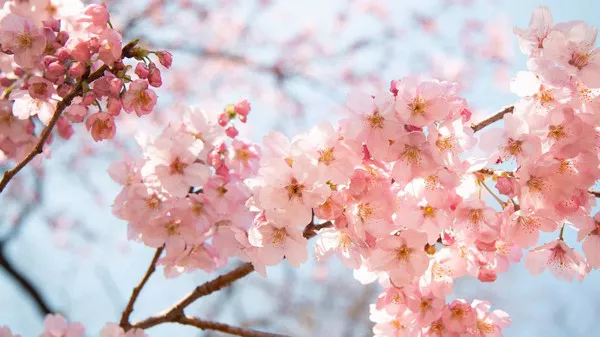Flowers, with their captivating hues and mesmerizing beauty, have always fascinated humanity. Whether adorning a garden, a bouquet, or a landscape, flowers showcase an array of colors that evoke emotions, attract pollinators, and contribute to the overall aesthetic appeal of their surroundings. But what exactly makes flowers different colors? Delving into the science behind flower pigmentation reveals a fascinating journey of biochemical processes, genetic regulation, and environmental influences that shape the vibrant palette of the botanical world.
The Basics of Flower Coloration: Pigments and Perception
At the heart of flower coloration lie pigments, the molecules responsible for absorbing and reflecting light, thereby producing the hues we perceive. The primary pigments found in flowers include:
1. Anthocyanins: Perhaps the most widely recognized flower pigment, anthocyanins impart shades of red, purple, and blue to petals. These water-soluble pigments are abundant in many flowering plants and are responsible for the striking crimson of roses, the rich purples of violets, and the vivid blues of delphiniums.
2. Carotenoids: Found in a diverse range of plants, carotenoids produce yellow, orange, and sometimes red hues. These lipophilic pigments play a crucial role in photosynthesis and are responsible for the sunny yellows of daffodils, the warm oranges of marigolds, and the fiery reds of autumn leaves.
3. Flavonols: Another class of color-producing compounds, flavonols generate pale yellow to white hues in flowers. These pigments, often found alongside anthocyanins, contribute to the delicate creaminess of magnolia blossoms, the soft yellows of primroses, and the pristine whites of lilies.
Genetic Determinants of Flower Color
While the presence of specific pigments largely dictates flower color, the genetic makeup of a plant ultimately governs the production and distribution of these pigments. The genes responsible for flower coloration encode enzymes involved in pigment biosynthesis and regulatory proteins that orchestrate their expression. Key genetic determinants include:
1. Gene Expression: The activation or suppression of genes encoding pigment biosynthesis enzymes directly influences flower color. Regulatory factors, such as transcription factors and microRNAs, modulate gene expression in response to developmental cues, environmental stimuli, and hormonal signals.
2. Allelic Variation: Variation in the alleles of genes controlling pigment production can lead to diverse flower colors within a species. Single nucleotide polymorphisms (SNPs), insertions, deletions, and rearrangements in pigment biosynthesis genes can alter enzyme activity, substrate specificity, and pigment accumulation, resulting in distinct color phenotypes.
3. Gene Interactions: The interaction between multiple genes, known as epistasis, can further shape flower coloration. Complex genetic networks govern the synthesis, transport, and sequestration of pigments within floral tissues, leading to intricate patterns and gradients of color expression.
Environmental Influences on Flower Color
Beyond genetic factors, environmental conditions play a significant role in shaping flower coloration. Factors such as light intensity, temperature, soil composition, and nutrient availability can influence pigment production, stability, and localization within plant tissues. Key environmental influences include:
1. Light Quality: The spectrum and intensity of light affect the synthesis and accumulation of flower pigments. Plants exposed to different light conditions, such as full sunlight versus shade, may produce varying levels of anthocyanins and carotenoids, leading to differences in flower coloration.
2. pH Levels: Soil pH can impact the availability of nutrients and ions required for pigment biosynthesis. Acidic soils tend to enhance the expression of anthocyanins, resulting in deeper hues of red and purple, while alkaline soils may favor the production of yellow and white pigments.
3. Nutrient Availability: The availability of essential nutrients, such as nitrogen, phosphorus, and potassium, influences flower pigmentation. Nutrient deficiencies or imbalances can impair pigment synthesis pathways, leading to pale or distorted flower colors.
4. Temperature Stress: Extreme temperatures, both cold and heat, can affect pigment stability and flower color. High temperatures may accelerate pigment degradation and lead to fading or bleaching of colors, while cold temperatures can impair enzymatic activity and disrupt pigment biosynthesis.
The Evolutionary Significance of Flower Color
The diversity of flower colors observed in nature reflects the intricate interplay between ecological, evolutionary, and reproductive factors. Flower coloration serves several crucial functions, including:
1. Pollinator Attraction: Many flowers have evolved specific colors and patterns to attract pollinators such as bees, butterflies, birds, and bats. Brightly colored petals and unique floral markings serve as visual cues that guide pollinators to nectar and pollen resources, facilitating successful pollination and reproductive success.
2. UV Protection: Some flower pigments, particularly anthocyanins, possess UV-absorbing properties that protect delicate floral tissues from damage caused by ultraviolet radiation. In regions with intense sunlight exposure, the presence of UV-absorbing pigments may confer a selective advantage to plants by reducing DNA damage and oxidative stress.
3. Herbivore Deterrence: Certain flower pigments exhibit deterrent or toxic properties that deter herbivores and pathogens. Brightly colored flowers often signal the presence of secondary metabolites, such as alkaloids and phenolics, which repel potential predators and reduce the risk of herbivory.
4. Reproductive Isolation: Flower color can serve as a reproductive barrier between closely related plant species, contributing to speciation and diversification. By exhibiting distinct color patterns and pigmentation profiles, plants can reduce hybridization events and maintain genetic integrity within populations.
Conclusion
The kaleidoscope of colors displayed by flowers represents a captivating convergence of biochemical, genetic, and environmental factors. From the synthesis of pigments within floral tissues to the intricate interplay of genes and environmental cues, the process of flower coloration is a testament to the complexity of plant biology. Understanding the mechanisms underlying flower coloration not only enriches our appreciation of botanical diversity but also sheds light on the adaptive strategies employed by plants to thrive in diverse ecological niches. As we continue to unravel the mysteries of flower colors, we gain deeper insights into the intricate tapestry of life that surrounds us.


